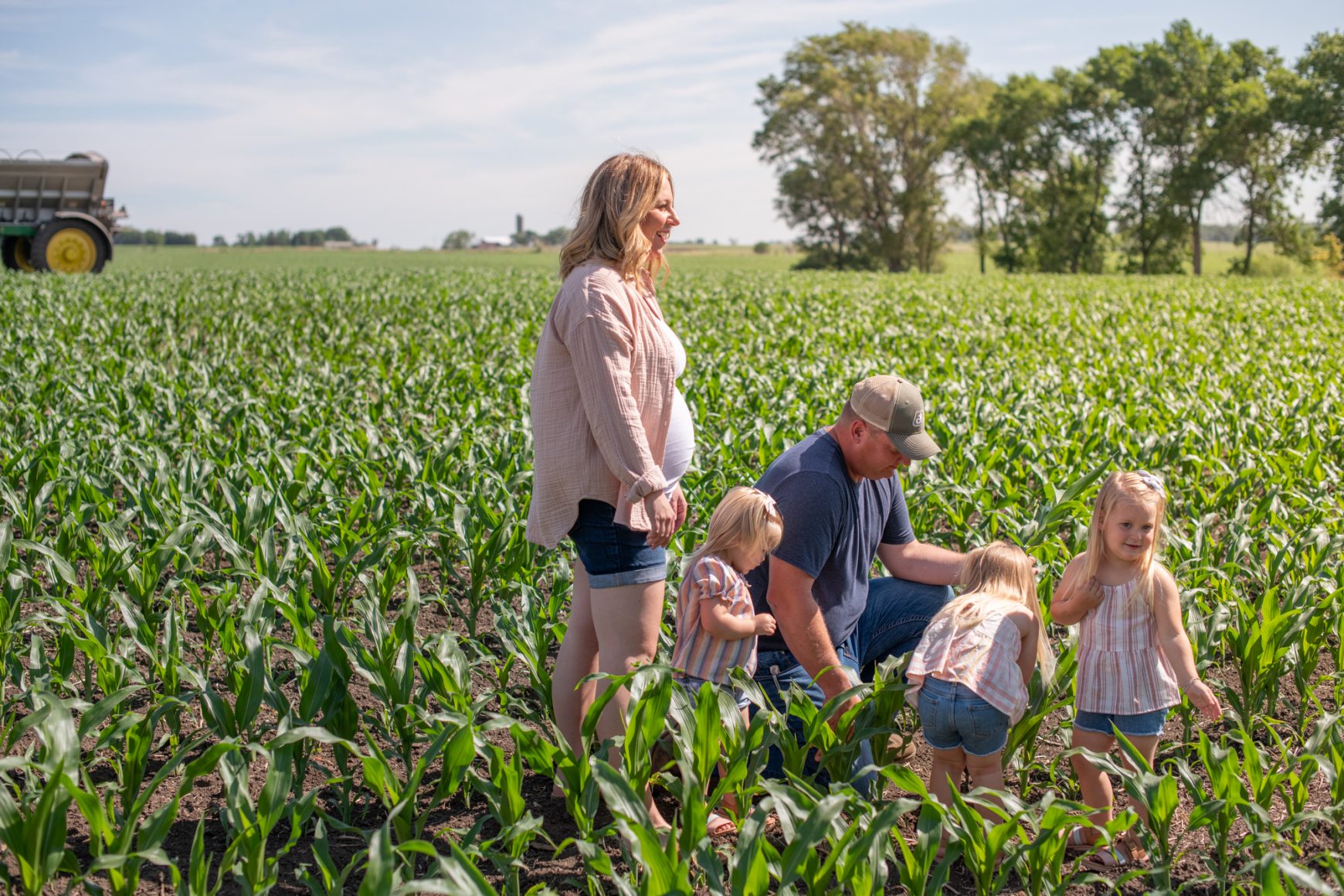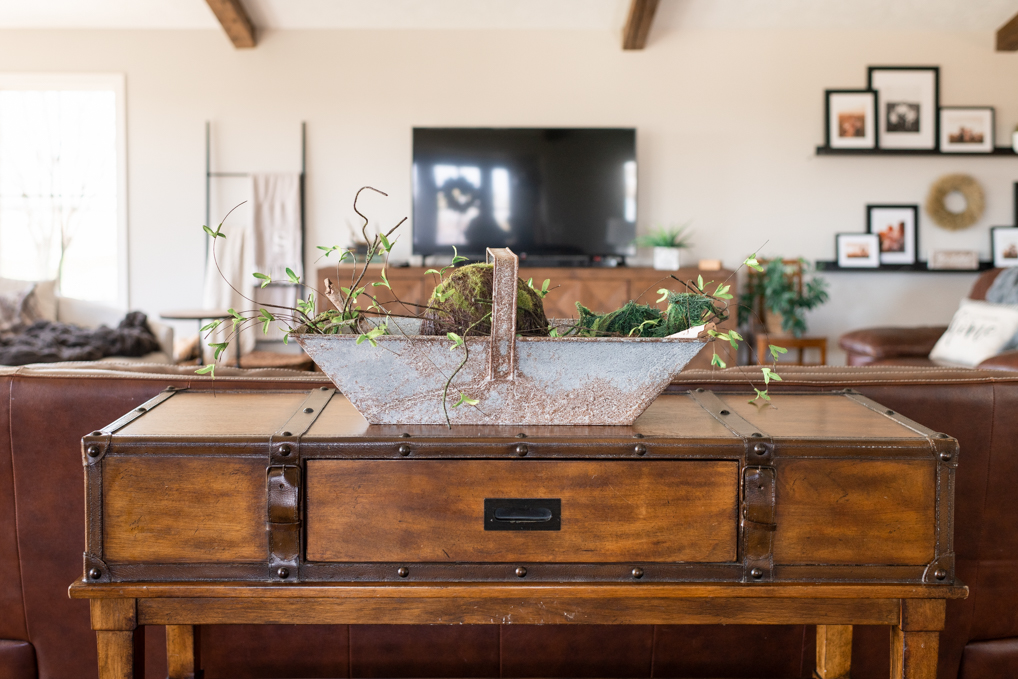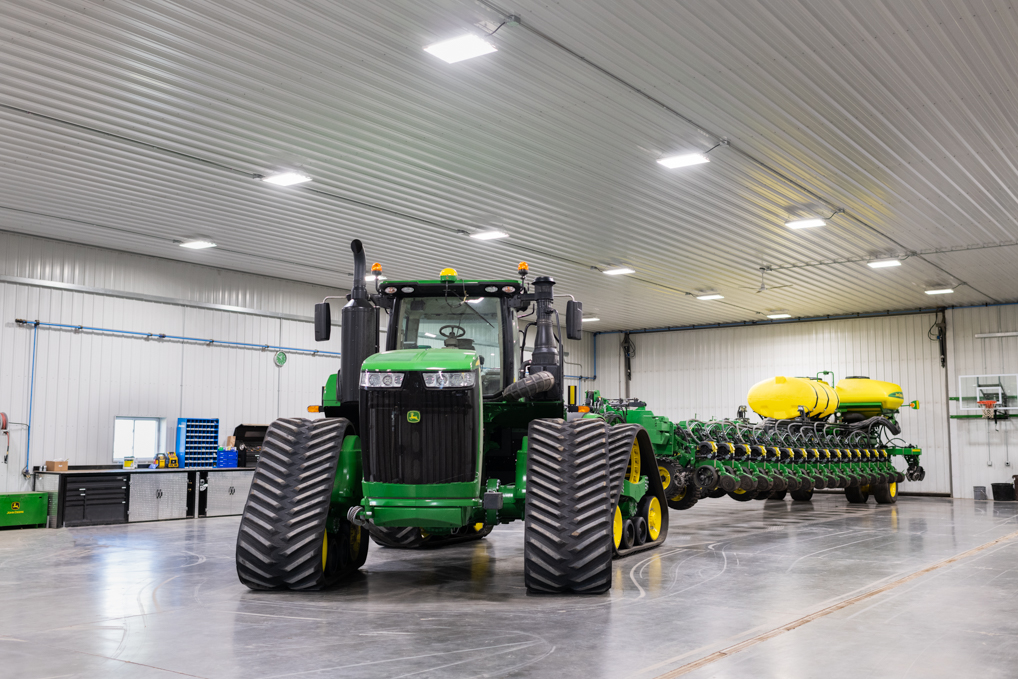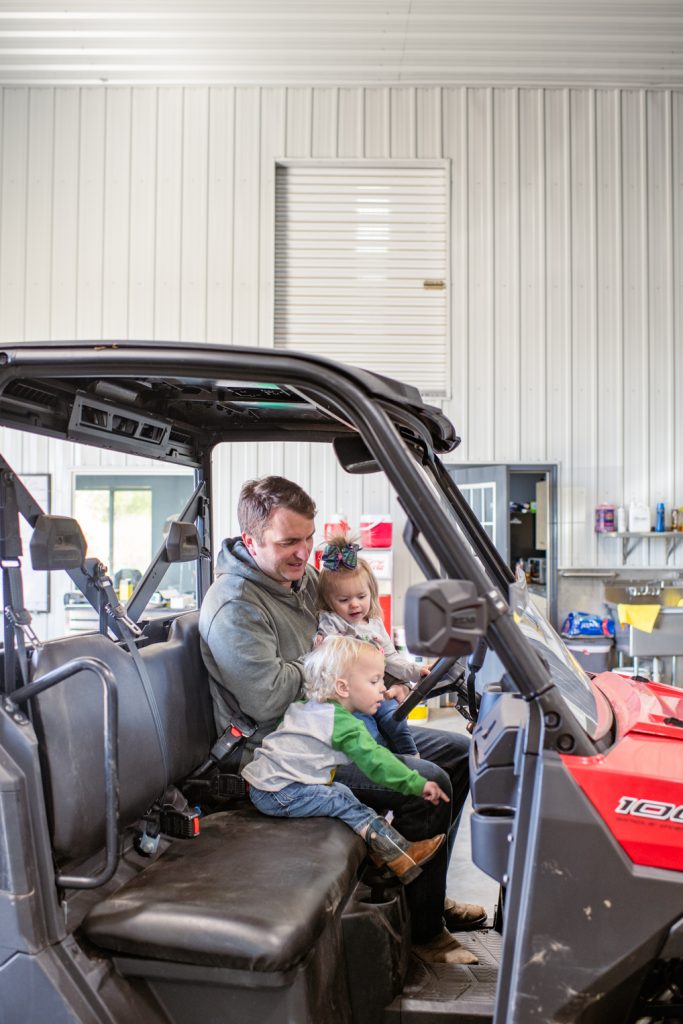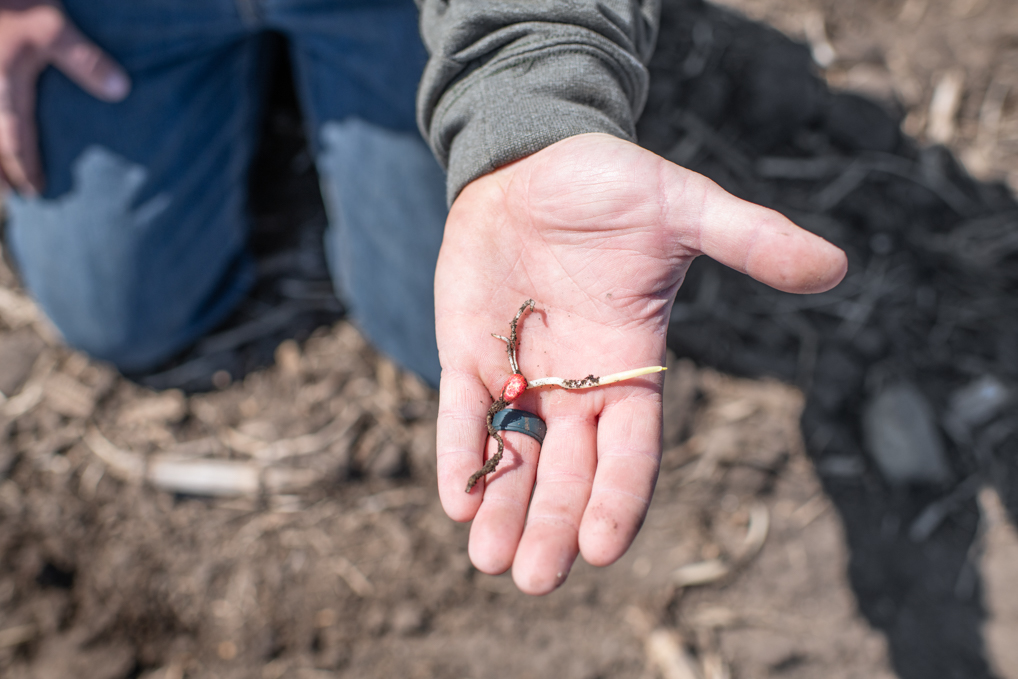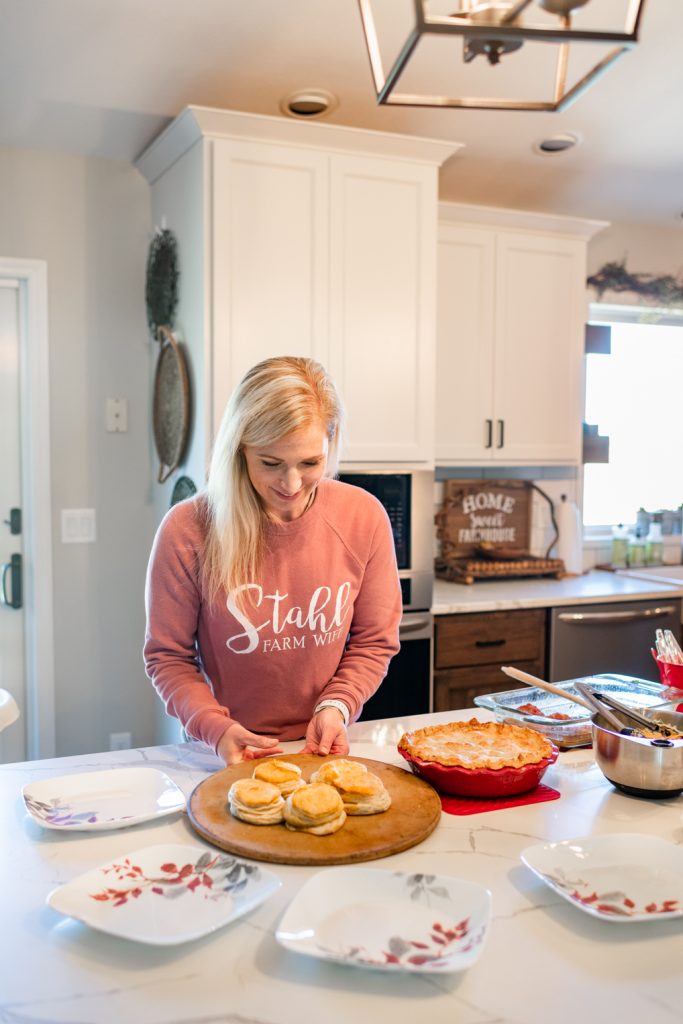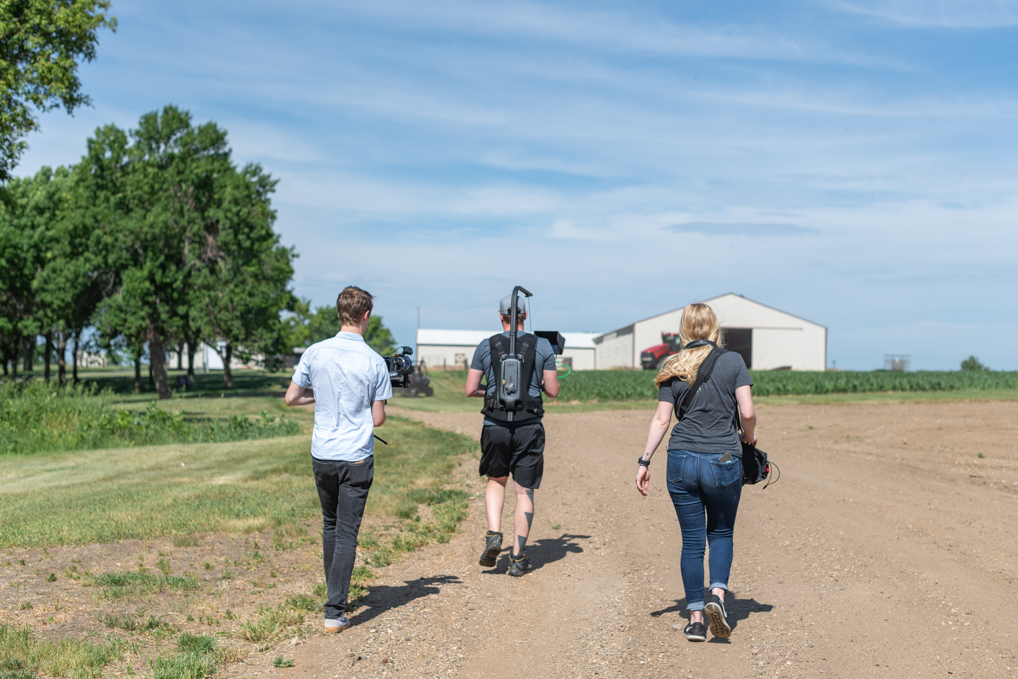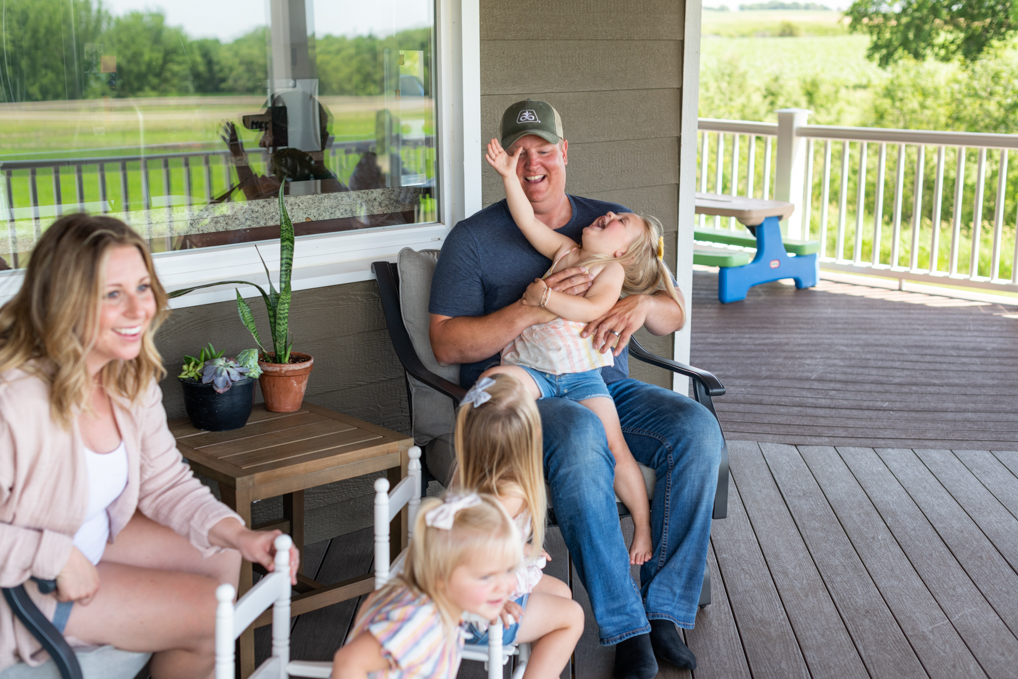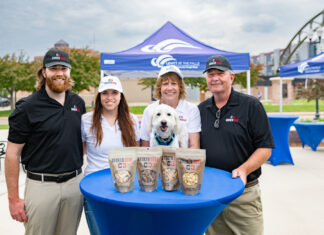605 team members crammed into the car with our camera gear and headed to Bridgewater to start our two experiences on South Dakota farms. In usual form, we heard Google Maps a second too late and skirted past farmer Scott Stahl’s property on the gravel road, dirt powdering the car and our pride.
After parking in the correct spot, Scott greeted us outside. We went inside their modern farmhouse to meet his wife, Amanda, and several of their five children who weren’t at school. In total there are Landon, James, Harrison, and twins Caroline and Camden.
“This is the farm I grew up on, and after college I worked seven years in downtown Sioux Falls at First National Bank,” said Scott. “Then in 2013, I started farming full time.”
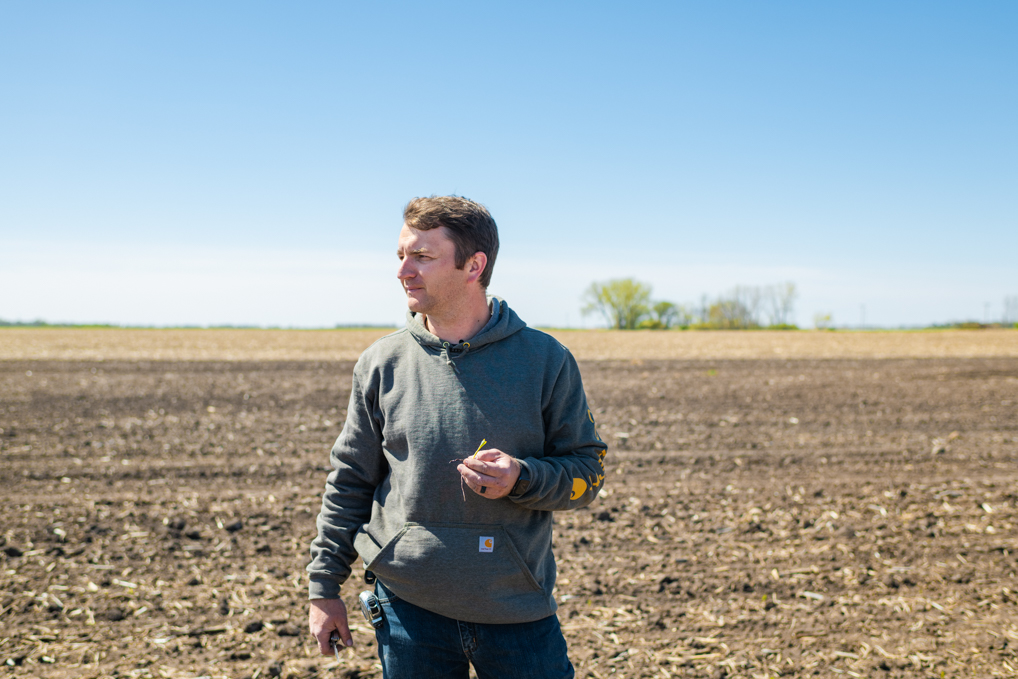
“There are fewer and fewer farms every year, which means there’s fewer and fewer people who grow up on a farm. We’ve just taken the approach that it’s so important we help to educate and let others know where their food comes from and how it’s grown because there’s less people who have exposure to that growing up than 40 to 50 years ago.” -Scott Stahl
In the last year, the Stahls said they renovated and remodeled the original family home.
“It’s pretty special to be living where you grew up,” noted Scott. “That’s one of the things about farming … You know small businesses can be that way, but farming especially is very generational. It’s a lot of responsibility, but it’s also something very cool to be a part of.”
Scott is president of the South Dakota Corn Growers Association (SDCGA) and is a fourth-generation farmer who still works with his father, Charles. His operation includes corn, soybeans, oats, a calf-cow operation, a feedlot, and custom fertilizer spreading.
“My grandpa started farming in 1947,” said Scott. “Just up the road is where he actually started farming.”

When asked if he always knew he wanted to follow in his relatives’ footsteps, he said, “You know, that’s a great question. I always had a passion for it. My dad kind of strongly encouraged me to have a job elsewhere, which I’m thankful for.”
After gaining experience downtown as an agriculture lender at the bank, he decided to take the leap into the family business. Scott went to school at Northwestern College in Orange City, IA for agricultural business and agricultural finance, so the farming bug had bitten him early on.
“It’s a very diverse industry and requires a lot of pragmatism, and it’s not just sitting on a tractor like it used to be,” said Scott. “There’s a lot of technology involved, a lot of management, a lot of practices to keep up on, a lot of science.”
Some of the practices he says he needs to know are finance, insurance, and agronomy.
“You’re also pretty much a veterinarian of sorts,” he laughed.
While he has a staff of five, his favorite part of the job is working with his wife and kids.
“My wife is very supportive,” said Scott. “She taught third grade in Tea. We came out here and we started having children, and now she’s a very big part of the farm, as well. She obviously helps with all sorts of things, but Amanda runs a tractor in the fall, and when we need to vaccinate cattle, she’s helping with that.”
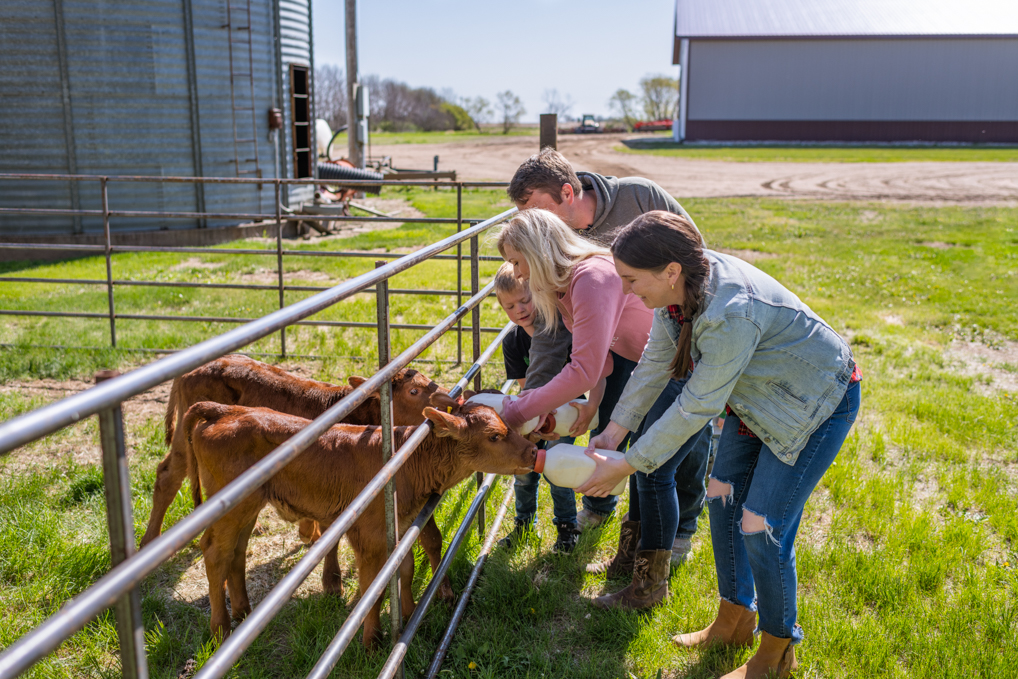
We met Amanda and the kids near the calves, who were mooing with hunger while they waited for us to bottle feed them.
“Any of you want to feed one? If you do, you can’t hesitate, because when they’re hungry, they’re hungry,” he said.
Several of us chipped in to feed the calves, who made their intense eye gaze somehow still adorable as they finished the contents of the bottles in what seemed like seconds.
“We have around 1,000 members who are members of South Dakota Corn. We try to get a handle on the industry, and staff does a good job of keeping us up to speed on what’s changing, what are some opportunities for our farmers, what can we do to help educate,” said Scott.
The South Dakota Corn Growers Association (SDCGA) focuses on:
+Advocating for farmers in Pierre.
+Protecting the freedom to farm.
+Improving farmer profitability.
+Influencing policy in D.C.
+Weighing in on regulations.
“Part of the baptism into becoming a farm kid is picking rocks,” described Scott. “They pick a lot of rocks. This is prime time for it because the crops aren’t too big, they’re just getting going. They do a lot of picking rocks, weed eating, mowing the lawn, and keeping the acreage up.”
The kids bottle feed calves twice a day, and when it’s time for cows to go to pasture, Scott says they also help with that.
The next stop was getting on a UTV to follow Scott to the fields where crops were growing, which were planted late in April.
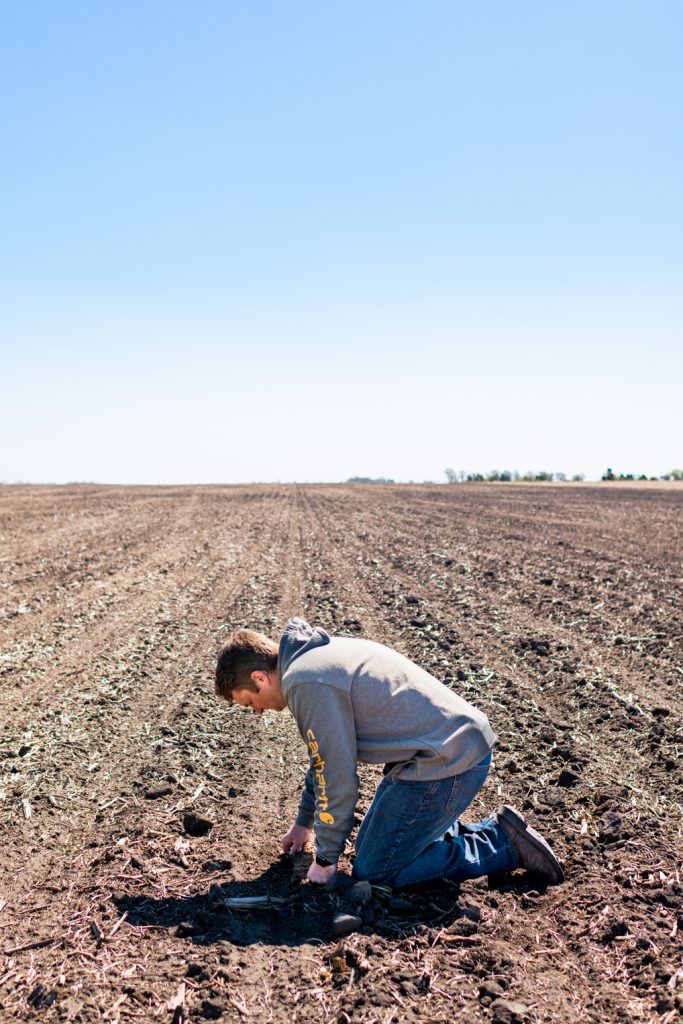
“Corn is reliant upon growing degree dates, growing degree units. It depends on the amount of heat that it gets,” he explained. “There’s a formula for how that’s come up based on daytime high, nighttime low, so to speak. But typically, we plant the crop late April, early May, harvest it starting late September, and the goal is to get it done by Thanksgiving.”
“Knee high by the Fourth of July,” said 605’s Taylor Hanson.
Scott chuckled, “So you’ve heard of it.”
“Right now you can learn a lot of things by looking in your field. With the reproductive cycle, that’s when corn needs its most amount of nutrients,” he continued, bending over at a discovery. “See, this is amazing, come here. Look how he’s poking through this residue. Last year’s soybean stubble poked through all that crud to come through.”
As we wrapped up, Scott informed us that Amanda and his mother, Brenda, make lunch and dinner every day for the staff, and they prepared us something to eat before we left. I ate better than I do on most holidays in one sitting, so it was hard to leave.
A few weeks later in early June,
we took off to Madison to meet SDCGA’s secretary and treasurer Dave Ellens at his farm. He walked out with his wife, Karli, and his three daughters, Juliet, and twins Luella (“LuLu”) and Sophie.
Dave is a third-generation farmer, and the original farm has been in Wentworth since 1944. He farms in Lake and Moody counties.
“My grandpa Kermit started the farm with my grandma Juliet, and my dad, Dale, and my mom, Sharon, took over in the ‘80s,” he said. “I took over near Madison in 2012 when I bought my first piece of ground, and that’s where me and Karli and the family live now.”
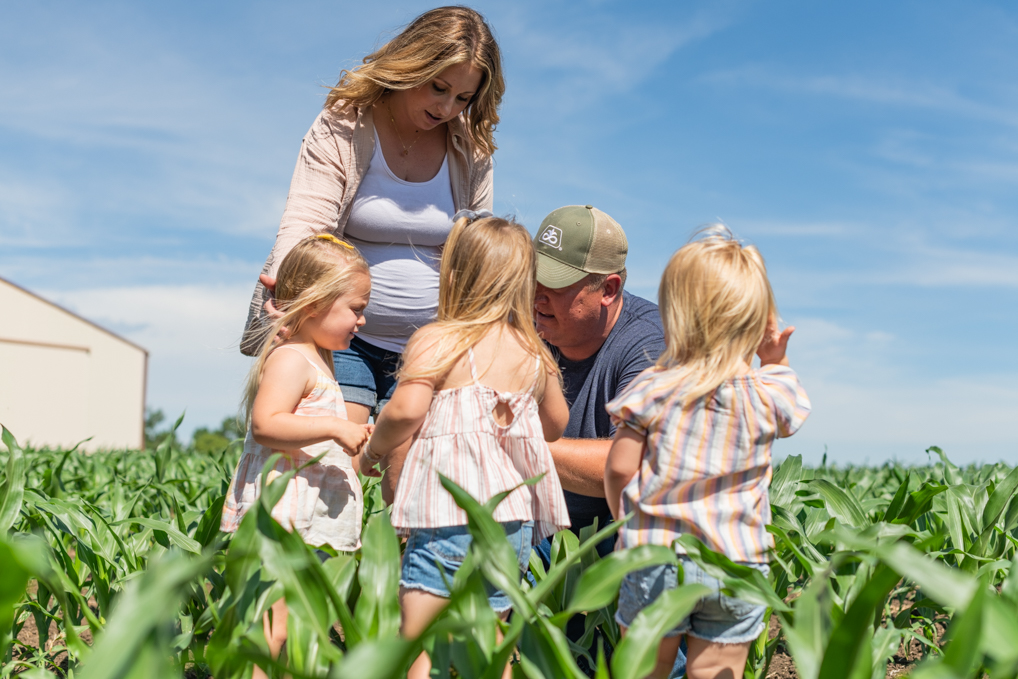
Dave took over the whole operation in 2017 as a grain farmer with corn and soybeans, and is also an owner of LakeCo Crop Services, and a third-generation Pioneer dealer.
“I have an ag retail location where I sell Pioneer seed and crop protection and crop insurance,” he continued, “and I also sell fertilizer.”
Dave also mentioned being part of the National Corn Growers Ethanol Action Team and Corn Congress.
“We talk about all the stuff that’s going on in agriculture right now and take a position on it,” he said.
The crew walked over to the cornfield with the Ellenses in tow, and at this point the corn was much higher than weeks before at the Stahl residence.
Explaining how agriculture is doing today, Dave said, “Agriculture right now is doing really well. I mean, commodity prices are really good. As far as weather goes, it’s dry right now. We’re kind of holding on for dear life, hoping to get that next rain.”
He continued, “I think what the farmers are looking for right now is just some stability in policy, whether it’s crop insurance or trade, you know, infrastructure, our roads, our bridges. We’re just looking for more stability right now, so that’s really what we’re fighting for at South Dakota Corn.”
“We wouldn’t put something on a plate or put something in an industry that we wouldn’t feed our own family.” -Dave Ellens
To grab some video, we asked Dave to get into his red CaseIH Steiger 500 Quadtrac and he pulled LuLu up with him.
After getting some photos, Dave asked, “Anyone want to drive it?”
I tend to get shy and want to let other team members try things, but I jumped at the chance. It was a beast. Dave made me feel at ease driving and even told me I could speed things up if I wanted to. LuLu was on his lap, and giggles were had.
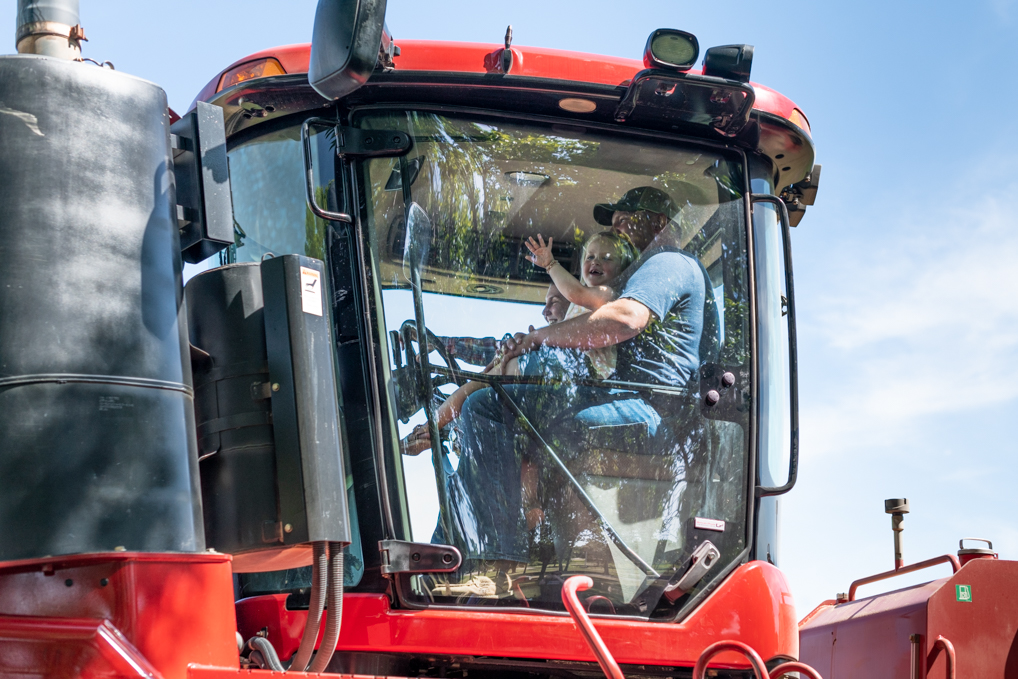
I asked him if he thought there were plenty of active farmers worldwide or if the industry could use more.
“There’s always going to be a need for farmers when it comes to feeding the world,” he said. “One thing we are finding, though, is there are getting to be less farmers. Farms are getting big, and equipment is getting bigger. So that’s the thing, the family farm is very important, and we need to keep it that way, I believe, because that’s what helps drive the local communities.”
Then the topic turned to soybeans and corn.

“Corn and beans are such a big part of South Dakota agriculture. When you look at corn and the huge role it plays in feed for our cattle and our livestock, our pigs … is so huge,” he said. “We have a lot of ethanol plants in South Dakota, and for ethanol use in all the United States, that’s a huge role.”
Dave continued, “And soybeans really have become a big export for us. We send a lot of beans to China and all over the world, to make various products.”
The best part of the job, according to Dave, is that no two days are the same.
“Especially with farming, some days you might be planting, you might be harvesting, you might be spraying, you might be spreading fertilizer,” he explained, “but also, with owning the ag retail location, there’s days I might not even be on the farm, so I really rely heavily on my dad and other employees we have on the farm to make sure everything is still running when I’m not around.”
Dave’s pint-sized daughters aren’t exactly helping at the farm, but they still participate.
“They like to ride the tractor with me most because there’s candy in my lunch bucket,” he laughed. “They aren’t really involved too much, but they love going out and checking on crops with me and just being a part of the farm. They really are starting to understand what it is.”
As we finished his interview, we noticed the letterboard in their basement announcing baby number four this winter. The Ellens family will be welcoming another girl.
We congratulated them over lunch, which Karli made for everyone. One of the girls kept having a stare-off with 605’s Jordan Cushman while he ate his Sloppy Joe.
Gathering back into the car, we couldn’t help but reflect on not only the hard work of each family but the wholesomeness and genuine kindness of every single one of them.


